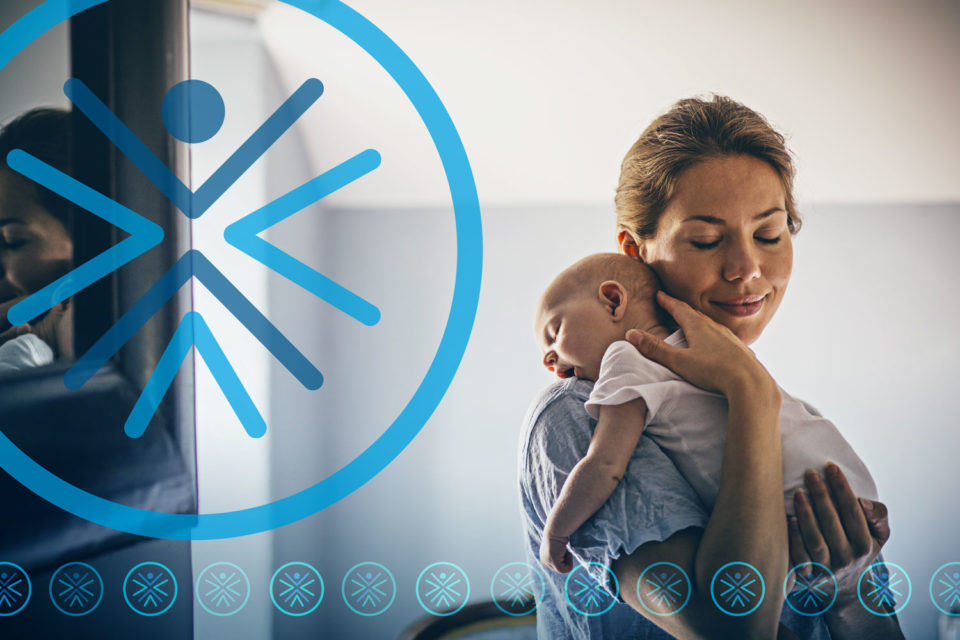Does Your Baby Have Torticollis?
By: Amy Williams, PT, DPT —
Does your baby frequently tilt his head to one side? Or does she prefer to nurse on one breast versus the other? Do you notice a flattening of the back of the head on one or both sides? If so, your baby may have torticollis.
So that begs the first question . . .
What is torticollis?
Torticollis is Latin for “twisted neck,” which is a pretty accurate description. It results from the shortening of a muscle called the sternocleidomastoid (SCM for short), which connects the head behind the ear to the collar bone. When this muscle is tight, it results in the baby tilting his head to one side and a preference to turn (rotate the neck) to the opposite side. For example, if the right SCM is involved, the baby will position her head tilted to the right with the right ear closer to the right shoulder, but will show a preference and greater ease turning to look to the left.
Torticollis can result from abnormal positioning in utero, traumatic birth events, or if the baby is consistently in the same position in car seats, swings, when sleeping, etc. If left untreated, the condition can result in limitations in neck range of motion, flattening of the skull (known as plagiocephaly), facial asymmetries, and inadequate exploration and interaction with the baby’s environment which can lead to gross motor delay, muscle weakness, and balance/coordination impairments.
The good news
When detected early (by the time the baby is 2–3 months old), torticollis can be easily treated by a physical therapist! We utilize stretching, positioning, and handling techniques and teach parents how to incorporate all these things at home. The more educated you are about the condition, the better you will be at helping your baby.
Here are a few tips:
- When the baby eats, offer the bottle or breast in a position that helps the baby turn away from the favored side.
- Encourage the baby to look away from the favored side when playing with toys, changing diapers, or talking to the baby by positioning yourself on the side of the baby opposite the favored side.
- Don’t forget tummy time! Have your baby frequently spend brief periods of time during the day on her belly so she can work to strengthen the muscles of the neck by lifting her head. And again, try to put yourself, an engaging toy, or a favorite pet on the side your baby does not like to look toward to facilitate turning the head in that direction.

